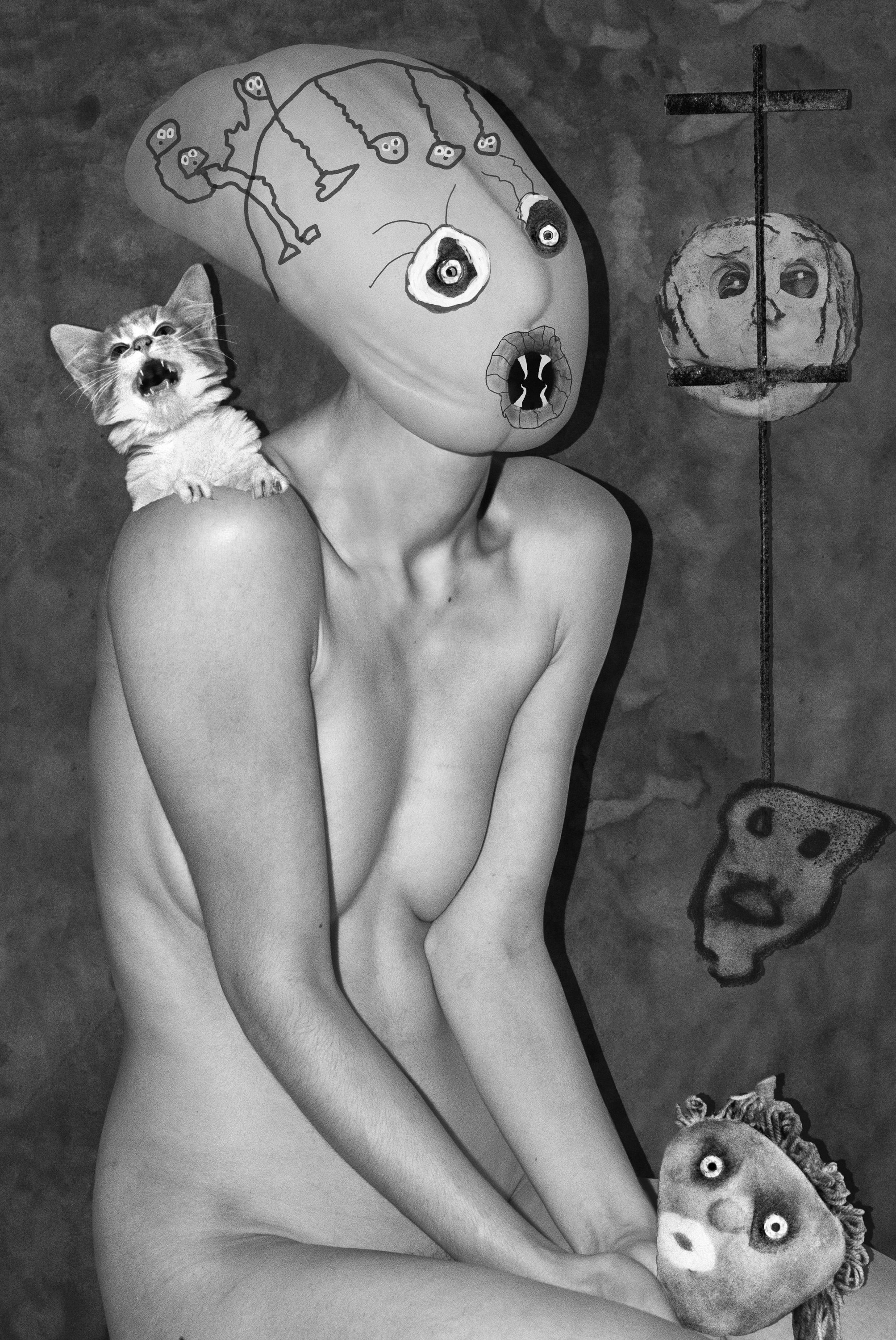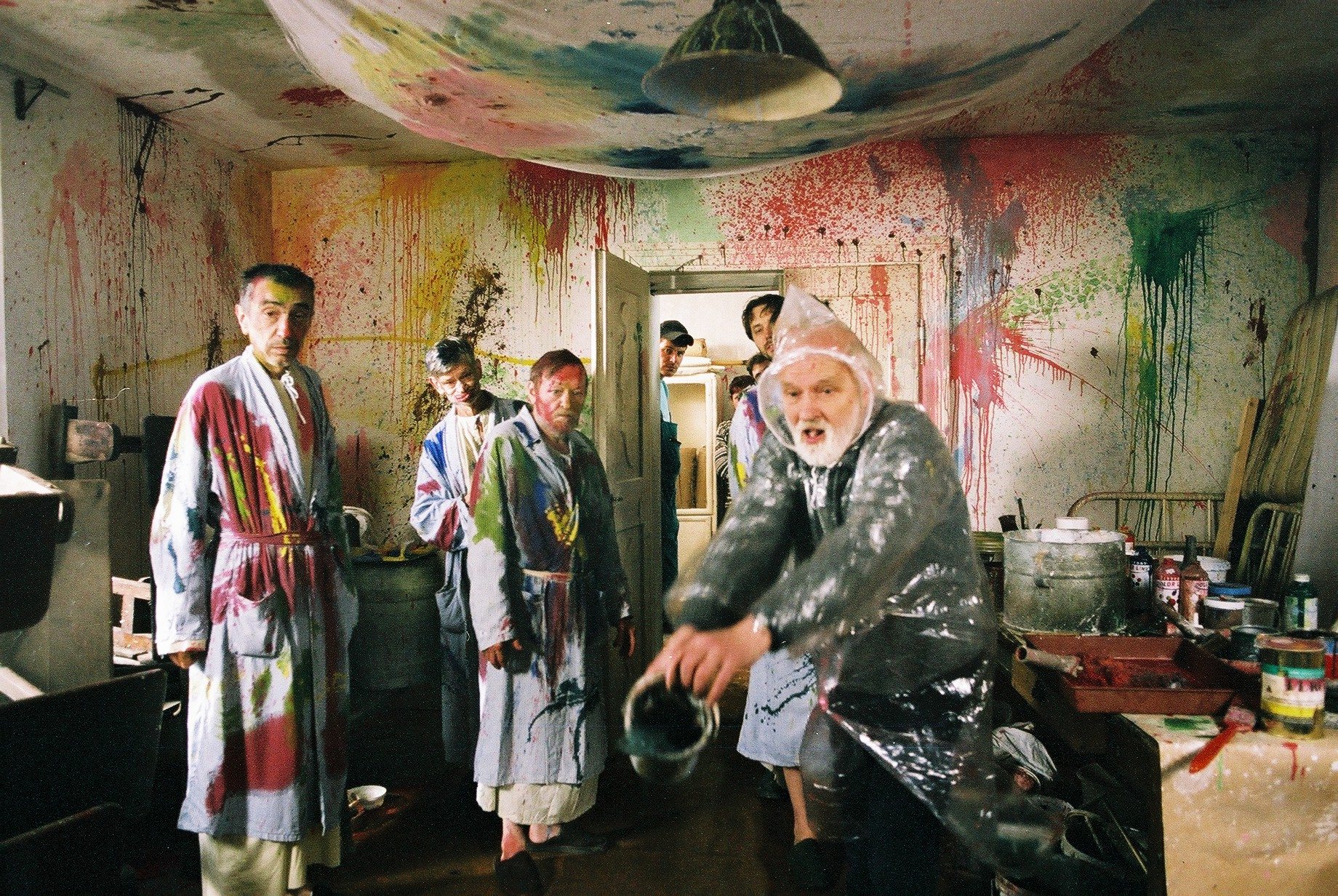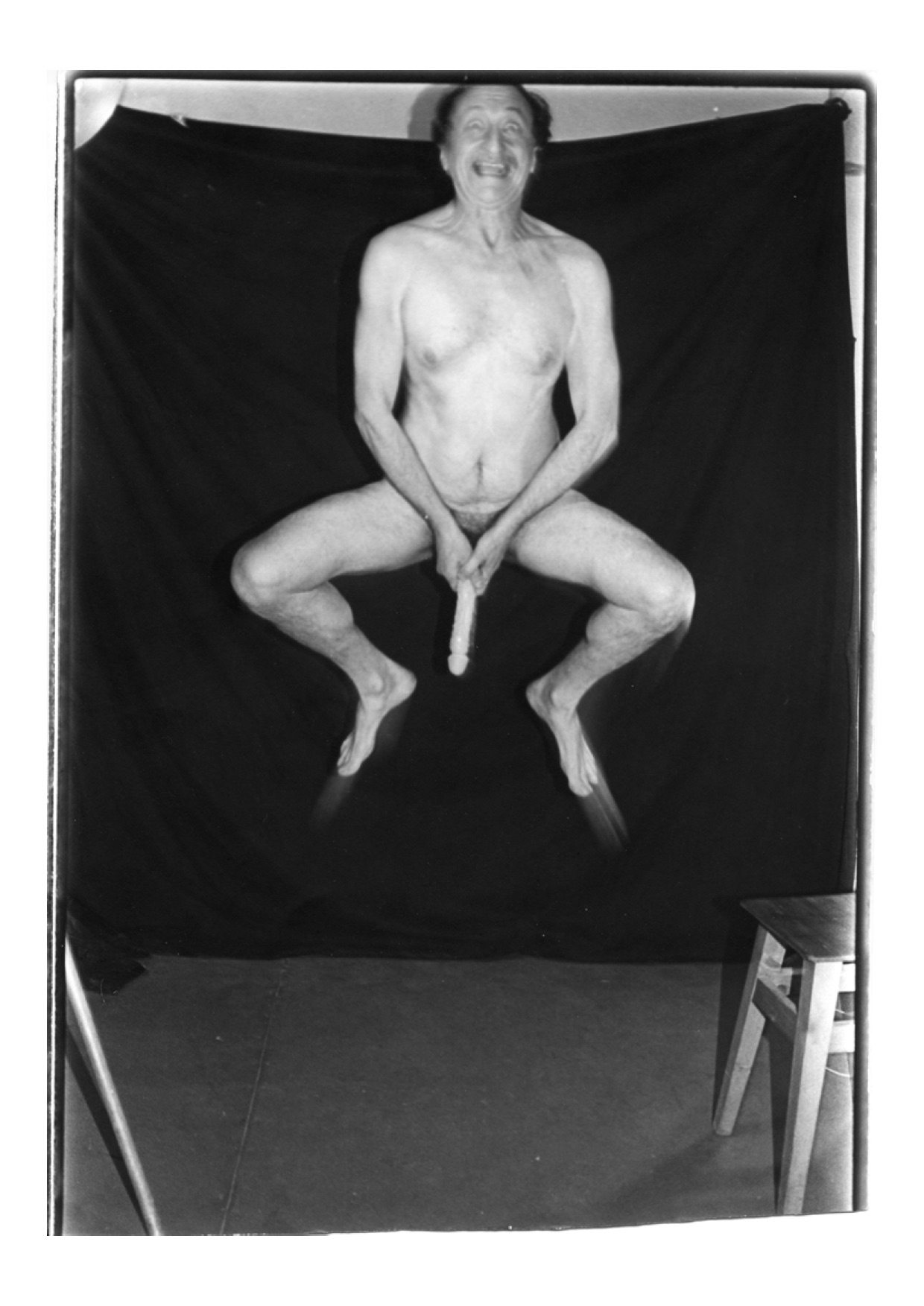GOOBLE GOBBLE ONE OF US
|EVA KELLEY

Artists Roger Ballen and Asger Carlsen’s project No Joke can propel a fragile psyche into a state of vertigo. While Carlsen is known for his digitally-contorted silhouettes, Ballen’s work has long focussed on interior projections of the ego. This mind-body duality is the surface on which the hallucinogenic theater of No Joke takes form.
Through layering Ballen’s prehistoric-looking collages and sketches upon Carlsen’s liquified portrait photography, the artists created an enigmatic series in black-and-white. Grimy blankets cover bodies that rest serenely against bedroom walls. A bare-chested Ballen poses as a ventriloquist, propping his Carlsen dummy up on his lap. A large hand reaches for a crouching woman’s pelvis, her face painted and her body smeared with gaping smiley faces. A fishbowl-faced woman, whose outstretched arms have been replaced with a second torso, is pinched by a bystander’s smudged fingers. The masked subjects are rendered deformed, misshapen, with clubs for arms and wooden prostheses, as if created by a deranged Photoshop god.












A creepy intimacy hovers over the spaces and figures in No Joke, yet the result is oddly whimsical. With Ballen residing in Johannesburg and Carlsen living in New York City, these images were the product of a digital correspondence that opened up the space for a kind of kinship. “I guess I always had a feeling when I was growing up that I wasn’t part of the group in a way. I think that photography and making art has helped me get closer to a sane world, so to speak,” Asger Carlsen said in an interview, “It’s like you have this awkward feeling, you don’t feel comfortable around people, and for me, these images are getting rid of this feeling a little bit.” Taken as such, the works reflect an attempt to deal with interpersonal awkwardness by pushing it into a physical presence. Like the Quantum Zeno Effect, a theory wherein particles only come to a stable form when examined under a microscope, Ballen and Carlsen’s bodies seem to explore the contours of what the body looks like in the dark – before it is wedged into form by social codes. This is the realest form of surreality, that which turns into something normal when it steps into the light.
Credits
- Text: EVA KELLEY
- All Images: ROGER BALLEN & ASGER CARLSEN

